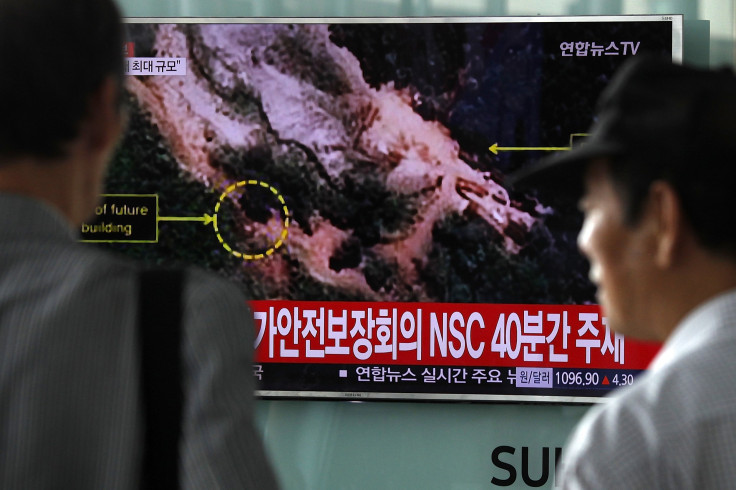North Korea's Nuclear Test Site Punggye-ri Sees 'Significant Increase' In Tunneling Activity

Tunneling activities at North Korea’s main nuclear test site have been stepped up, a U.S.-based think tank said Thursday, even as the inter-Korean peace talks resumed over the past week.
38North, a website specializing in tracking North Korean activities, reported that satellite images showed increased activity at the Punggye-ri site — with growing piles of excavation waste, larger number of mining carts and personnel throughout December.
The analysis was based on new images of the test site released commercially. Analysts said the North Portal (Tunnel 2) — where the last five nuclear tests were conducted — of the test site was in a dormant state, with water draining from its entrance.
However, an estimated nine mining carts were seen at the West Portal (Tunnel 4), and there appeared to be new rails on top of the spoil pile, which was seen expanding in size.
Approximately 100-120 people were seen in the courtyard of the Southern Support Area in seven formations — a rare occurrence, the purpose of which is unknown.
According to the website, the activities emphasized the intentions of the country to maintain the Punggye-ri site's potential for future nuclear testing.
Recent commercial satellite imagery shows that the North Portal of Punggye-ri is dormant, but there is significant tunneling underway at the West Portal. https://t.co/u46LgcV0ew
— 38 North (@38NorthNK) January 11, 2018
In another article on 38North, Alexander Vorontsov, the head of the Institute of Oriental Studies of the Russia Academy of Sciences, was quoted as saying that North Korean diplomats were extremely serious about the possibility of war between North Korea and the U.S.
Based on a trip to Pyongyang, Vorontsov said the atmosphere there was unstable and that the soldiers were “long been sleeping without removing their boots.”
“These [North Korea] officials feared that the U.S. was already trying to shape the battlefield for a military operation against the North, and that South Koreans do not seem to have grasped the reality that the Trump administration is set on a course for preventive war. However, Pyongyang is extremely serious about this scenario and is not bluffing when it says that “only one question remains: when will war break out?” he wrote.
The U.S. announced Thursday that it has deployed three nuclear-capable B-2 stealth bombers and 200 air personnel in the territory of Guam, to which North Korea had threatened to launch a missile in August last year.
Approximately 200 #Airmen and three #B2 Spirits deployed to @AndersenAFBGuam to support @PacificCommand's Bomber Assurance and Deterrence mission. pic.twitter.com/Qufnu7gXh7
— PACAF (@PACAF) January 11, 2018
“The bomber deployment is part of an ongoing planned deployment that affects not only the Korean Peninsula, but also a broader alliance structure in the Pacific,” said Marine Corps Lt. Gen. Kenneth F. McKenzie Jr. about the decision to deploy the bombers to Guam.
Meanwhile, President Donald Trump boasted about having good relations with North Korean leader Kim Jon Un in an interview with the Wall Street Journal on Thursday.
“I probably have a very good relationship with Kim Jong Un,” Trump said. “I have relationships with people. I think you people are surprised.” However, he did not reveal if he had actually spoken to Kim. “I’m not saying I have or haven’t.”
Earlier, he also claimed credit for restarting the inter-Korean peace talks, tweeting: “With all of the failed “experts” weighing in, does anybody really believe that talks and dialogue would be going on between North and South Korea right now if I wasn’t firm, strong and willing to commit our total “might” against the North. Fools, but talks are a good thing!”
The talks resulted in the decision that North Korea would participate in the Winter Olympics in Pyeongchang, South Korea, in February.
© Copyright IBTimes 2025. All rights reserved.





















